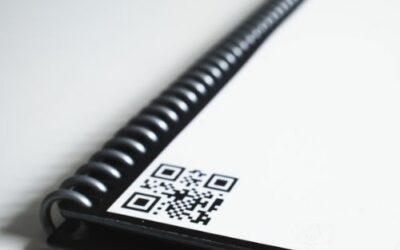In this guide:
- Why Should You Track Fixed Assets?
- Using Asset Tracking Software
- What is a Fixed Asset Register?
- Advantages of Asset Tracking Software
- Deploying Asset Tracking Software
- Fixed Assets and Their Attributes
- Adding Your Fixed Assets
- Use Asset Tags
- Collect and Add Data For Your Fixed Asset Register
- How Do I Begin Tracking Fixed Assets?
In this guide:
- Why Should You Track Fixed Assets?
- Using Asset Tracking Software
- What is a Fixed Asset Register?
- Advantages of Asset Tracking Software
- Deploying Asset Tracking Software
- Fixed Assets and Their Attributes
- Adding Your Fixed Assets
- Use Asset Tags
- Collect and Add Data For Your Fixed Asset Register
- How Do I Begin Tracking Fixed Assets?
To understand how asset tracking software works, and how to deploy it, we must first understand what fixed asset tracking is. A fixed asset however is an asset that is used by the business over a long period of time. Selling such assets takes time, which is where the term “fixed” originates from.
Fixed asset tracking involves keeping a record of essential information for all such items owned by the company for accurate auditing, enhancing productivity and ensuring a high level of transparency in business operations.
Why Should You Track Fixed Assets?
Fixed assets play an important role in every business. Not only are they used to produce goods and services, but these assets also hold significant financial value. By analysing the trends portrayed by these assets and their changing values, it is far easier to make better decisions while keeping long-term business objectives in mind.
Furthermore, tracking your fixed assets can assist you in identifying data discrepancies by highlighting oddities in the database. Asset tracking can be used in identifying the depreciation of the assets.
This information can be used to make well-informed asset-related decisions. With concise and informative data available at the ready, you can trust yourself to make the best decisions possible for your company.
Using Asset Tracking Software
Asset tracking software is a specialised software application that businesses can use to maintain their asset register. By allowing you to add your assets – each with a unique profile – you can store every piece of relevant, important information for that asset within the software.
Moreover, by utilising the powerful toolset offered by itemit’s asset tracking software, you can give each individual asset a unique identity with the help of asset tags. These asset labels enable you to track assets easily. Bundled with other features like equipment checkout, bookings and accurate auditing, itemit’s asset tracking software offers you a competitive advantage compared to all the different asset tracking software available.
What is a Fixed Asset Register?
A fixed asset register is an asset tracking software consisting of a database that stores a compiled list of all the fixed assets owned by a company. It holds all the important details regarding your fixed assets in one place, improving accessibility and simplicity.
The information stored in the asset tracking software contains information ranging from the asset identity, location, assignee, financial data and every other piece of information you want to track. Additionally, the fixed asset register also records financial data of the asset, such as the cost, date, current valuation, depreciation details, and so forth.
Advantages of Asset Tracking Software
Tracking assets using asset tracking software comes with a wide range of benefits. By increasing the amount of automation in the business, the tracking software aids the business in many ways.
Not only does it help in lowering administrative costs (by reducing the time taken to manually analyse asset usage to improve accuracy and efficiency), using a fixed asset register can help improve the profitability of your business. Some other advantages of asset tracking are:
- Streamlining auditing
- Enabling GPS positioning for assets
- Tracking asset maintenance
- Improved customer service
- Improved accountability
Being able to access itemit’s services via a mobile app help promote manageability, allowing you to make use of itemit’s services at any time, and from any place.
Deploying Asset Tracking Software
Before beginning to use asset tracking software productively, it is important to understand what your asset register keeps track of. Therefore, we have briefly explained which of the fixed assets and the attributes of the fixed assets are to be recorded.
Fixed Assets and Their Attributes
An asset tracking software should contain only important and relevant data regarding your assets. Fixed assets such as buildings, property, and different equipment are all considered to be unique entries for your fixed asset register. It must be noted that only information such as the purchase date, current valuation, and owner are recorded by the asset register.
Adding Your Fixed Assets
The first step in setting up your asset tracking software is none other than adding your fixed assets to your asset register. It is always better to physically cross-check before adding quantitative data to your assets profile; doing so will help improve the accuracy of your data and as a result, the quality of the decisions made will improve.
Use Asset Tags
While you’re adding your fixed assets to the asset tracking system, it’s a good idea to tag them with fixed asset tags. Asset tags are physical tags that are used to link physical entities to their digital counterparts stored within the software.
Asset tags allow you to scan the tag and the corresponding asset will appear on your asset tracking software. Furthermore, every time you scan an asset’s tag, the last seen location of the asset will be updated automatically, giving you an audit trail of where your assets have been.
Collect and Add Data For Your Fixed Asset Register
Once you’ve added and tagged your assets, you can then proceed to track and manage all your assets data. For instance, you can add check-in/check-out information, maintenance data, asset reminders, and so on.
While using your asset tracker software to add (or update) information regarding your assets, the itemit’s tracking software automatically stores this data, which can then be recalled and presented in all forms of configurable exports and reports.
How Do I Begin Tracking Fixed Assets?
itemit’s asset tracking software solution can fulfil all of your needs- and more. With a horde of specialised features, it will optimise your business productivity making fixed asset tracking a breeze.
To learn more about how itemit can help you track your fixed assets, feel free to reach out to us at team@itemit.com. You can also try out itemit’s unique features for yourself and get a hands-on user experience with a 14-day free trial. Fill in the form below to start!
Fixed Asset Tracking
Choose a better way to track your assets
Start your free 14-day trial now
Instant access. No credit card details required.
Related articles
5 Benefits Of Fixed Asset Management
What are the benefits of fixed asset management? Can using a fixed asset register make all the difference to your business? Read this post to find out!
The Best Way To Utilise Asset Management For Small Businesses
What is the best way to utilise fixed asset register management for a small business? Read our latest post now to find out!
Why You Should Manage Your Assets with QR codes
QR codes may be small in size but can be incredibly transformative to your operations. Discover why you should consider QR codes for your asset management.





